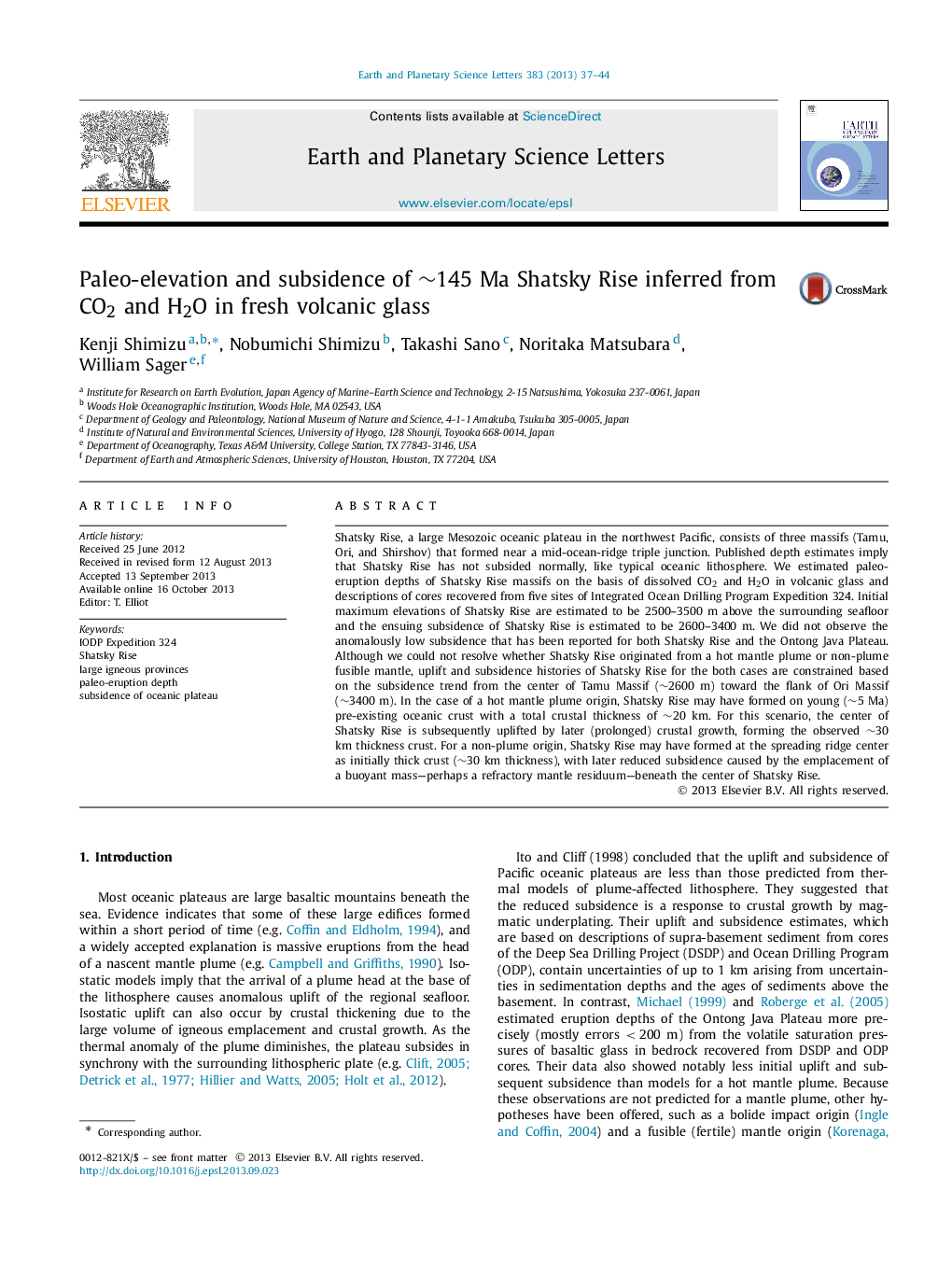| کد مقاله | کد نشریه | سال انتشار | مقاله انگلیسی | نسخه تمام متن |
|---|---|---|---|---|
| 6429844 | 1634773 | 2013 | 8 صفحه PDF | دانلود رایگان |

- We found fresh basaltic glasses from 145 Ma Shatsky Rise.
- H2O and CO2 contents of basaltic glasses indicate shallow-water eruptions.
- Initial maximum elevations of Shatsky Rise are estimated to be 2500-3500 m.
- The ensuing subsidence of Shatsky Rise is estimated to be 2600-3400 m.
- Results imply there was later crustal growth or buoyant mass beneath the rise center.
Shatsky Rise, a large Mesozoic oceanic plateau in the northwest Pacific, consists of three massifs (Tamu, Ori, and Shirshov) that formed near a mid-ocean-ridge triple junction. Published depth estimates imply that Shatsky Rise has not subsided normally, like typical oceanic lithosphere. We estimated paleo-eruption depths of Shatsky Rise massifs on the basis of dissolved CO2 and H2O in volcanic glass and descriptions of cores recovered from five sites of Integrated Ocean Drilling Program Expedition 324. Initial maximum elevations of Shatsky Rise are estimated to be 2500-3500 m above the surrounding seafloor and the ensuing subsidence of Shatsky Rise is estimated to be 2600-3400 m. We did not observe the anomalously low subsidence that has been reported for both Shatsky Rise and the Ontong Java Plateau. Although we could not resolve whether Shatsky Rise originated from a hot mantle plume or non-plume fusible mantle, uplift and subsidence histories of Shatsky Rise for the both cases are constrained based on the subsidence trend from the center of Tamu Massif (â¼2600m) toward the flank of Ori Massif (â¼3400m). In the case of a hot mantle plume origin, Shatsky Rise may have formed on young (â¼5Ma) pre-existing oceanic crust with a total crustal thickness of â¼20km. For this scenario, the center of Shatsky Rise is subsequently uplifted by later (prolonged) crustal growth, forming the observed â¼30 km thickness crust. For a non-plume origin, Shatsky Rise may have formed at the spreading ridge center as initially thick crust (â¼30km thickness), with later reduced subsidence caused by the emplacement of a buoyant mass-perhaps a refractory mantle residuum-beneath the center of Shatsky Rise.
Journal: Earth and Planetary Science Letters - Volume 383, 1 December 2013, Pages 37-44